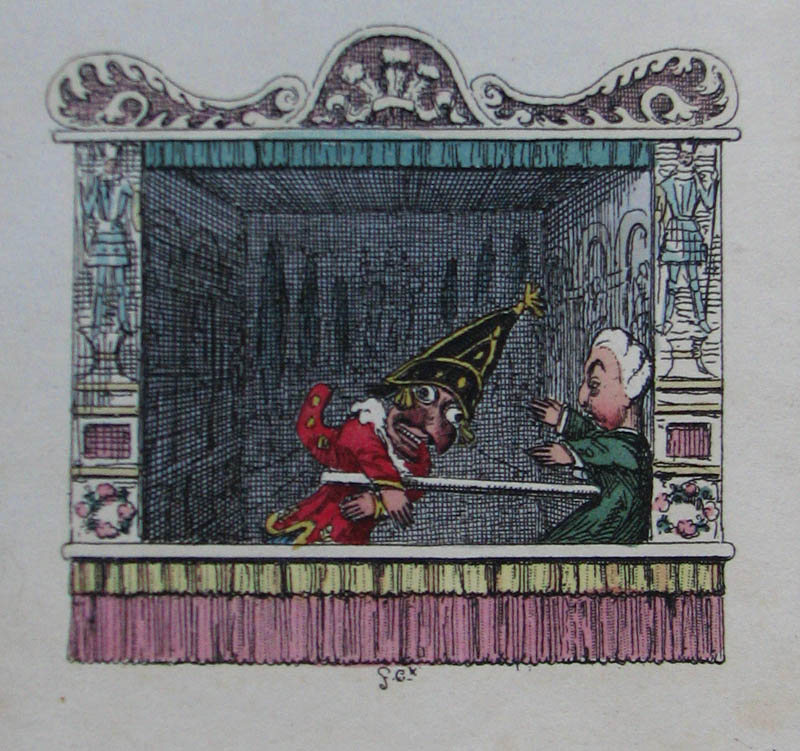Goodness, when will I learn with these topics? I should have known that a history of puppets would go back thousands of years and appear in most ancient cultures around the world. Like so many other topics, lots of cultures claim to have been the first to utilize puppets, but that's more about propaganda than it is about history. Part of the trick in that argument is untangling the articulated dolls from the marionettes (see what I did there?). However, this is not the purpose of today's posting. Bullet dodged. Moving on.
When you discuss puppetry, there are four main types: shadow, rod, glove, and string.
Shadow puppets may have been the earliest type (you've made some with your hands at night in front of a lamp, right?), with all of the elements of this type of performance being used by Plato in his story about the cave dwellers. Traditionally, flat figures were cut from leather and manipulated via thin rods or strings. These figures were projected onto a screen with the use of oil lamps. This method of storytelling is still popular in India and Indonesia, but seems to have been practiced in China thousands of years ago.
 |
| http://www.unima-usa.org/publications/shadow/Brown.html |
Rod puppets are manipulated from below. The first of these were likely shadow puppets, but eventually they came out from behind the screen (perhaps the performers wanted to work better hours) and got prettied up with paint and other forms of decoration. Indian and Indonesian puppets were manipulated from below, while Chinese puppets were performed from the side. Later rod puppets attained a third dimension, gaining significantly in expressiveness.
Glove puppets are the most common today, including sock and finger puppets. Originally, these were rod puppets that used cloth to cover the rods, allowing the hand within to manipulate the rods unseen.

String puppets, or marionettes, are thought to have derived from those string automata (toys) found in ancient tombs of many cultures (automata would do one action, like kneading bread, when triggered). Created in Medieval France, or Italy, the term "marionette" may have come from their use in early Christian morality plays. In Europe, marionettes were generally considered the more refined form of the puppet show, due to their more artful construction, leaving the more crudely designed rod or glove puppets to the masses.
For those of you keeping track at home, muppets were named for being a combination of marionette and hand puppet.
Puppets have been used to tell all kinds of stories. They have been political commentators, religious spokespeople, and pure entertainment in equal measure throughout history. While many could be operated by a single performer, some in Japan (bunraku) required three men dressed in black (in full view of the audience) to operate them. Plays and operas were adapted for their use, but some stories were designed specifically for the smaller stage.
Similar to a pantheon of gods, many characters took on archetypal roles. Punch, (evolved from the Italian "Pulcinella) who may have attained his greatest fame on the English stage, was a trickster. Guignol (French), had an acerbic wit. Spejbl and Hurvinek were a father and son duo from the more modern part of the Czech tradition. Some of these characters were specific to a performer, while others spread as a national tradition.
While puppetry may have been appreciated by the upper classes, those pulling the strings were certainly not of their rank (much like their acting brethren). In Europe, when puppets began to be used for more than simple religious education and started injecting comedy, they were outlawed. These entertainers then hit the road and began to perform alongside other traveling acts, attaining the same sort of reputation as the gypsies (and, truth be told, most anyone from "outside" that relatively static society). In many cultures, this became a serious art form, requiring years of dedication to the craft.

Worth noting is that while ventriloquism was known as far back as ancient Greece, some Medieval European folks pretended to use it to commune with the dead, so they tended to burn people for doing it.
Wiki overview - http://en.wikipedia.org/wiki/Puppetry
Chinese shadows - http://www.travelchinaguide.com/intro/focus/shadow-puppetry.htm
Czech Puppetry - http://unima.idu.cz/en/czech-puppetry
Lots of Links - http://www.bransonshows.com/articles/PuppetShowsHistoryofthePuppet.htm
No comments:
Post a Comment